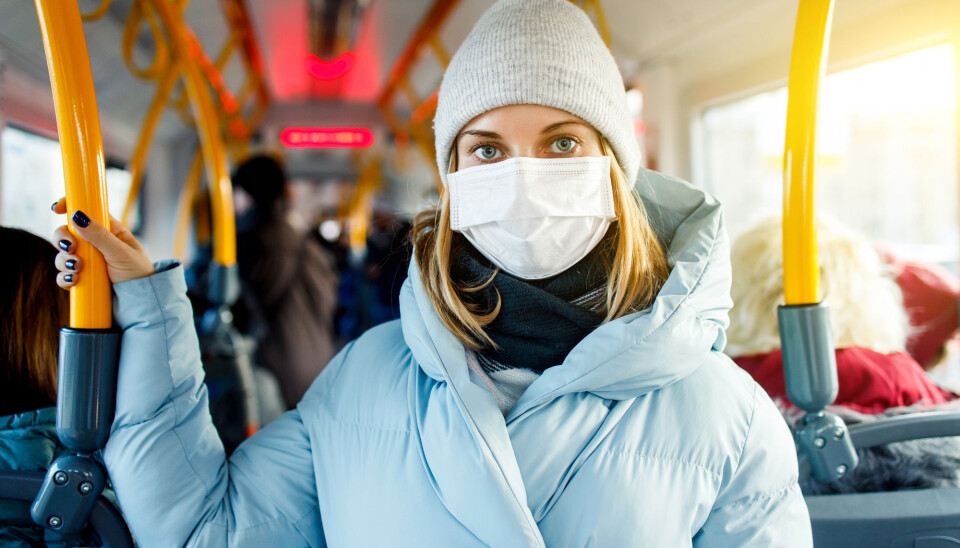
The coronavirus spreads more in low temperatures
Reseachers at Nord University in Northern Norway have confirmed what other researchers have also found: The virus may spread more when the weather gets colder.
Researchers at Nord University in Bodø have compared how sick people became this spring in the 20 countries that were hardest hit by the coronavirus – to the weather in these same countries.
Studies have previously shown that common cold viruses spread more easily in cool weather and dry air, as is often the case in winter.
The coronavirus is very similar to cold viruses in size and shape. It seems likely then, that this virus will also spread more easily in autumn and winter.
Examined meteorological patterns
“We created a model where we tried to find meteorological patterns in the spread of the coronavirus”, says Samuel Asumadu Sarkodie to sciencenorway.no.
“This way we were able to clearly confirm that with higher temperatures, the spread of infection is reduced”, he says.
“If the temperature drops to around zero degrees Celcius, it leads to increased spread of infection and to more people being affected by covid-19.”
Sarkodie and research colleague Phebe Asantewaa Owusu believe this may help explain why there is so little coronavirus in sub-Saharan Africa.
South Africa is an exception. More than 700,000 people have been infected here. But the infection peaked in June – when it was winter in South Africa.

Wind and humidity also have an affect
“We also found connections between wind and the spread of the coronavirus”, Sarkodie says to sciencenorway.no.
“More wind increases the spread of the virus. It may be that the wind helps the virus to move more easily from one person to another.”
Another connection the researchers see is that with high relative humidity, the spread of the virus is reduced. If, on the other hand, the air is dry – as it is more often in the winter – the virus thrives better.
Sarkodie and Owusu are both economists and they have used models from their field to bring together health data and weather data. The study is published in the latest issue of the journal Environmental Research.
The researchers have used corona-data from the Johns Hopkins University in the US, and global weather data from NASA. The period studied is from January until April this year. A total of 1940 cases of infection from 20 countries are included.
The people who were infected were living in temperatures varying form minus 42 degrees Celcius in Russia, to 35,5 degrees Celcius in India. Average temperatures varied a lot, as did wind and other weather conditions in the different countries.
The most rainfall was seen in Peru in South America, which was hard hit by the coronavirus.
Infectious diseases spread in winter
Several studies have previously found correlations between weather conditions and the spread of infectious diseases.
Both in Norway and other countries in the northern hemisphere, the flu and common cold spread more in the winter than in the summer.
This may be due to lower temperatures. But another contributing factor is certainly that people in the winter stay more indoors.
Infection control measures more important
The correlation between the new coronavirus and weather conditions has also been investigated by other researchers.
A study conducted in Bangladesh finds, like the study from Nord University, that there is a clear connection between lower temperatures and increased spread of the coronavirus.
A systematic review conducted by researchers at Pará University in Belem, Brazil, has brought together results from a total of 17 studies from different countries, all of which have looked at weather conditions and the spread of the coronavirus. The researchers conclude that the results are fairly consistent in demonstrating a link between cool weather and the spread of the virus.
At the same time, the Brazilian researchers conclude that weather conditions are not the most important explanation behind the spread of the virus. They state that infection control measures or lack of infection control measures implemented by the health authorities are more important.
Translated by: Ida Irene Bergstrøm
References and sources:
Asumadu Sarkodie Phebe and Asantewaa Owusu: Impact of meteorological factors on COVID-19 pandemic: Evidence from top 20 countries with confirmed cases, Environmental Research, December 2020.
Abu Reza Md. Towfiqul Islam m.fl: Effect of meteorological factors on COVID-19 cases in Bangladesh, Environment, Development and Sustainability, 8. October 2020.
Paulo Mecenas m. fl: Effects of temperature and humidity on the spread of COVID-19: A systematic review, Plos One, 18. September 2020.
Sara Pith: Does coronavirus spread more easily in cold temperatures? Here’s what we know, The Conversation, 29. October 2020.
———
Read the Norwegian version of this article on forskning.no
































